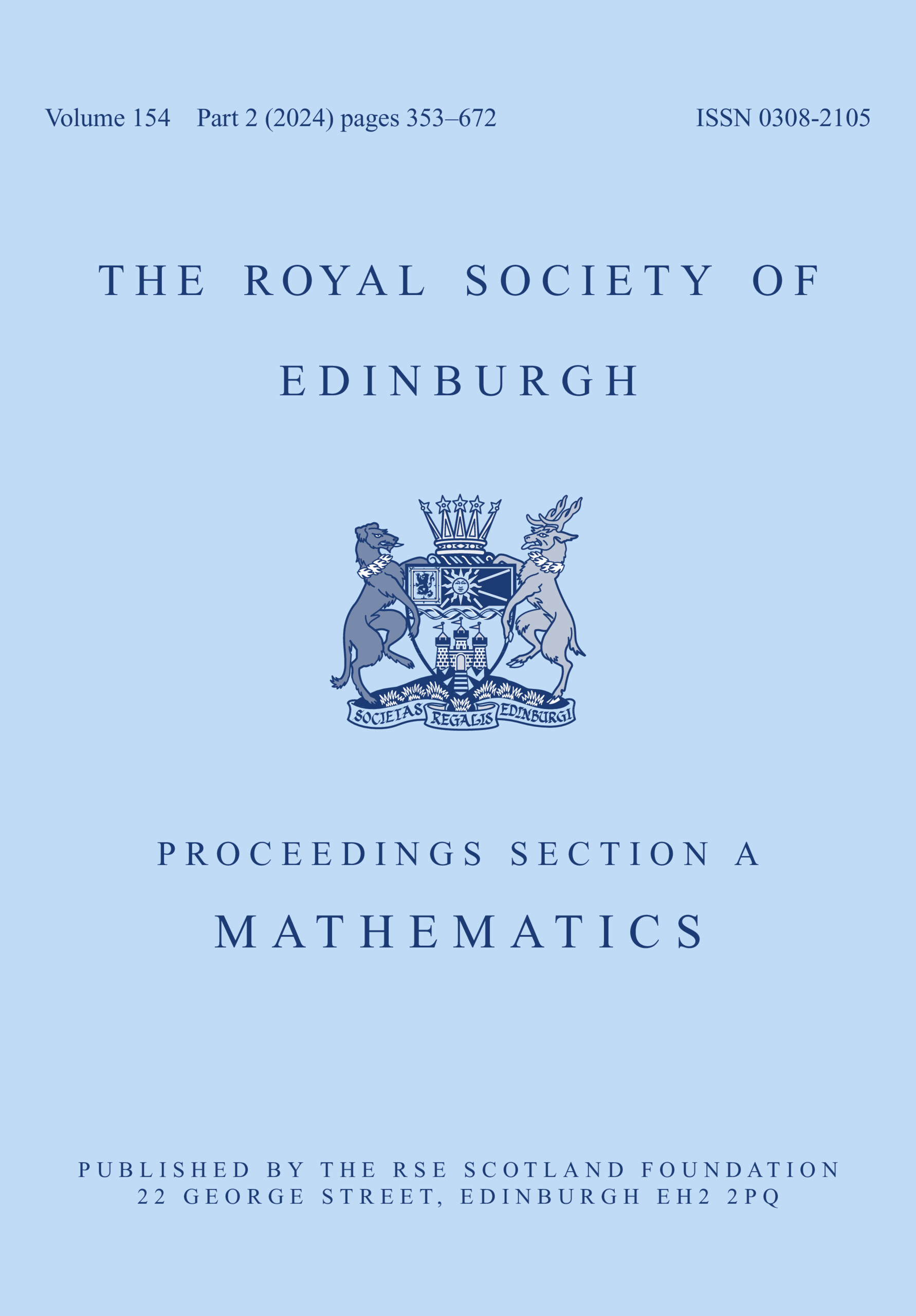Article contents
Stability, bifurcations and edge oscillations in standing pulse solutions to an inhomogeneous reaction-diffusion system
Published online by Cambridge University Press: 14 November 2011
Abstract
We consider a class of inhomogeneous systems of reaction-diffusion equations that includes a model for cavity dynamics in the semiconductor Fabry–Pérot interferometer. By adapting topological and geometrical methods, we prove that a standing pulse solution to this system is stable in a certain parameter regime, under the simplification of homogeneous illumination. Moreover, we explain two bifurcation mechanisms which can cause a loss of stability, yielding travelling and standing pulses, respectively. We compute conditions for these bifurcations to persist when inhomogeneity is restored through a certain general perturbation. Under certain of these conditions, a Hopf bifurcation results, producing periodic solutions called edge oscillations. These inhomogeneous bifurcation mechanisms represent new means for the generation of solutions displaying edge oscillations in a reaction-diffusion system. The oscillations produced by each inhomogeneous bifurcation are expected to depend qualitatively on the properties of the corresponding homogeneous bifurcation.
- Type
- Research Article
- Information
- Proceedings of the Royal Society of Edinburgh Section A: Mathematics , Volume 129 , Issue 5 , 1999 , pp. 1033 - 1079
- Copyright
- Copyright © Royal Society of Edinburgh 1999
References
- 11
- Cited by


